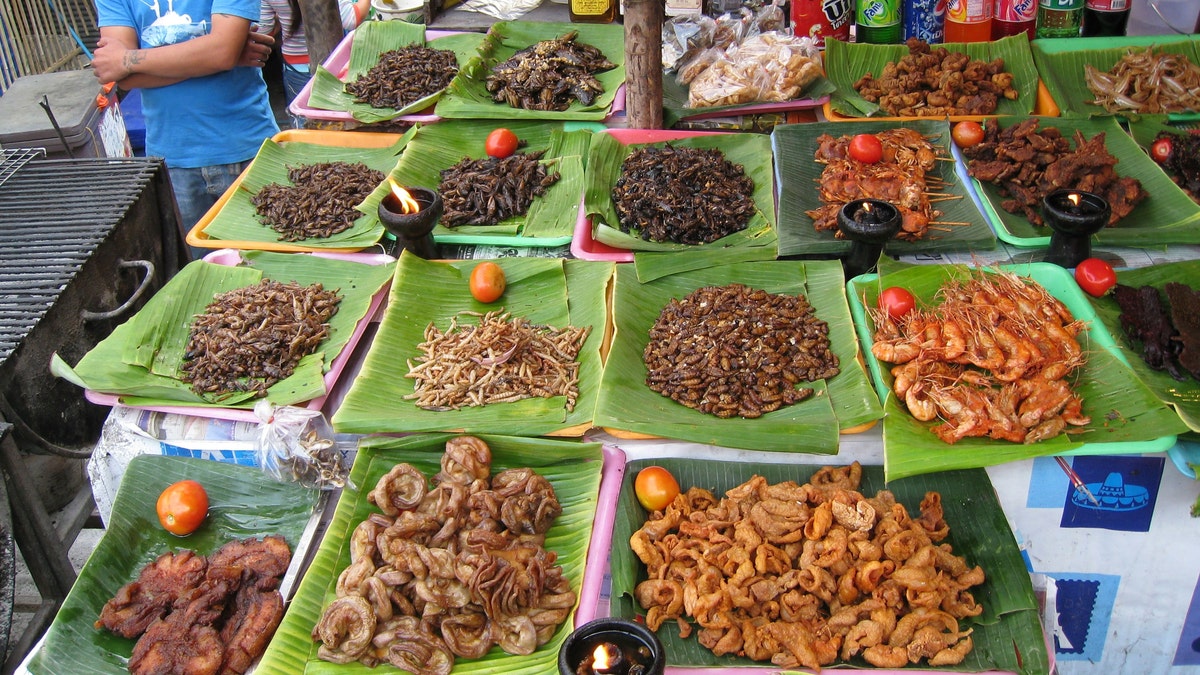
Insects for sale at a market in Chiang Mai, Thailand. (AP2008)
The latest weapon in the United Nations' fight against hunger? Edible insects, promoted as a low-fat, high-protein food for people, pets and livestock.
According to the U.N., they come with appetizing side benefits: Reducing greenhouse gas emissions and livestock pollution, creating jobs in developing countries and feeding the millions of hungry people in the world.
Some two billion people already eat insects, largely in Asia, Africa and Latin America, the Rome-based U.N. Food and Agriculture Organization said Monday as it issued a report exploring edible insect potential.
Some insects may already be in your food (and this is no fly-in-my-soup joke). Demand for natural food coloring as opposed to artificial dyes is increasing, the agency's experts say. A red coloring produced from the cochineal, a scaled insect often exported from Peru, already puts the hue in a trendy Italian aperitif and an internationally popular brand of strawberry yogurt. Many pharmaceutical companies use colorings from insects in their pills as well.
The U.N. is also touting the nutritional benefits of insects. Scientists have found that red ants, small grasshoppers and some water beetles pack (gram-per-gram or ounce-per-ounce) enough protein to rank with lean ground beef while having less fat per gram.
Bored with bran as a source of fiber in your diet? Edible insects can oblige, and they also contain useful minerals such as iron, magnesium, phosphorous, selenium and zinc.
Although beetles and caterpillars are the most common meals among the more than 1,900 edible insect species that people eat, other popular insect foods are bees, wasps, ants, grasshoppers, locusts and crickets. Less popular are termites and flies, according to U.N. data.
Compared to livestock, most insects raised for food are likely to produce fewer environmentally harmful greenhouse gases.
Insects on average can convert 2 kilograms (4.4 pounds) of feed into 1 kilogram (2.2 pounds) of edible meat. In comparison, cattle require 8 kilograms (17.6 pounds) of feed to produce a kilogram of meat.
Edible insects are also a money-maker. In Africa, four big water bottles filled with grasshoppers can fetch a gatherer 15 euros ($20). Some caterpillars in southern Africa and weaver ant eggs in Southeast Asia are considered delicacies and command high prices.
Based on reporting by The Associated Press.
Follow us on twitter.com/foxnewslatino
Like us at facebook.com/foxnewslatino
